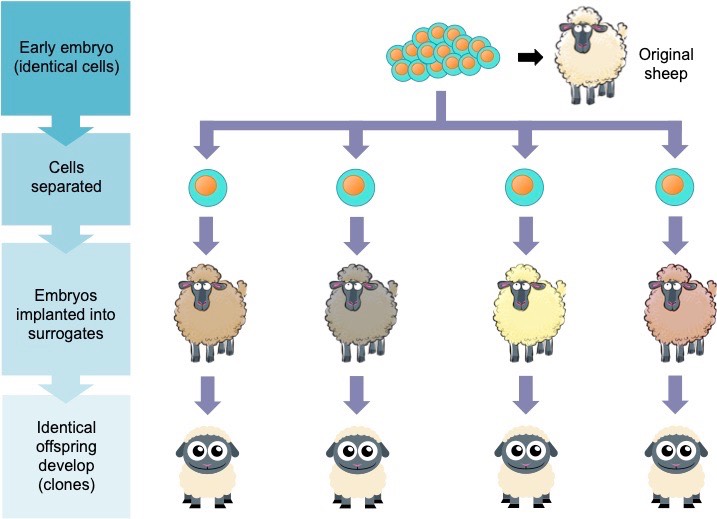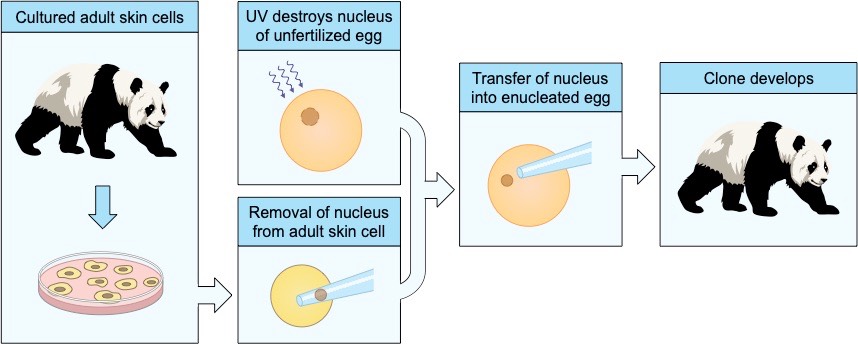Outcome:
|
Clones are groups of genetically identical organisms or a group of cells derived from a single original parent cell
- Cloning multicellular organisms requires the production of stem cells (differentiated cells cannot form other cell types)
Embryonic Division
At a very early stage, embryonic cells retain pluripotency (meaning they can divide and become any type of tissue)
- If these embryonic cells are separated artificially in the laboratory, each group of cells will form cloned organisms
- The separation of embryonic cells has to happen early in the developmental cycle, ideally around the 8 cell stage (morula)
- The separated groups of cells are then implanted into the uterus of a surrogate to develop into genetically identical clones
This method of cloning is limited by the fact that the embryo used is still formed randomly via sexual reproduction
- In other words, while the clones will be identical to each other, they will not be identical to the original parent
- This separation of embryonic cells is the artificial equivalent of the process by which identical (monozygotic) twins are born

Somatic Cell Nuclear Transfer (SCNT)
A second and more reliable method of artificial cloning involves somatic cell nuclear transfer (SCNT)
- This involves replacing the haploid nucleus of an unfertilised egg with a diploid nucleus from an adult donor
- The advantage of this technique is that it is known what traits the clones will develop (they are genetically identical to the donor)
Somatic cell nuclear transfer is a method by which cloned embryos can be produced using differentiated adult cells
- Somatic cells are removed from the adult donor and cultured (these cells are diploid and contain the entire genome)
- An unfertilised egg is removed from a female adult and its haploid nucleus is removed to produce an enucleated egg cell
- The enucleated egg cell is fused with the nucleus from the adult donor to make a diploid egg cell (with the donor’s DNA)
- An electric current is then delivered to stimulate the egg to divide and develop into an embryo
- The embryo is then implanted into the uterus of a surrogate and will develop into a genetic clone of the adult donor
In addition to cloning new organisms (reproductive cloning), SCNT can be used to clone new stem cells (therapeutic cloning)
- This involves harvesting the pluripotent stem cells from the cloned embryo (will involve the destruction of the embryo)
